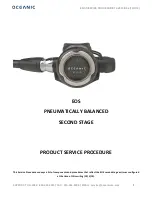
4-29
IM DL350-01EN
Configuring the Sensor (Sensor Setup)
Bridge Voltage (Excitation)
You can select the voltage to be applied to the bridge head.
• 2V: When the bridgehead resistance (bridge resistance) is 120 Ω to 1000 Ω
• 5V:
*
When the bridge resistance is 350 Ω to 1000 Ω
• 10V:
*
When the bridge resistance is 350 Ω to 1000 Ω
You cannot change the bridge voltage during waveform acquisition.
* The bridge voltage can be set to 5 V or 10 V only when:
• The bridge resistance is 350 Ω or more
• The strain gauge transducer supports a bridge voltage of 5 V or 10 V
Gauge Factor (Gauge Factor)
You can set the gauge factor of the strain gauge.
Selectable range: 1.90 to 2.20 (in steps of 0.01)
The gauge factor is a constant that is unique to the gauge. It should be listed in the manual or other
documentation for your gauge. You cannot change the gauge factor during waveform acquisition.
Gauge Factor When mV/V Is Selected (Gauge Factor: K)
On the instrument, you can specify the gauge factor. If there is no recommended gauge factor for the strain
gauge transducer, set the gauge factor to 2.00. For factors other than 2.00, e is computed with in the instrument
using the following equation.
e = (4/K) × (V/E)
e: The measured value of the strain gauge transducer (mV/V).
V: The measured bridge voltage (mV)
E: The applied bridge voltage (V)
K: The gauge factor
When you change the unit of a channel, the units for all the items related to the channel change.
• Upper and lower limits (Upper/Lower)
• Trigger level (Level)
• Automated measurement values of waveform parameters, cursor-measurement values, etc.
Performing Strain Balancing (Balance Execute)
Balancing automatically compensates the unbalanced portion of the bridge resistance. Balancing takes a few
seconds.
Range within which balancing is performed:
• ±10000 μSTR (when μSTR is selected)
• ± 5 mV/V (when mV/V is selected)
4 Vertical Axis
















































